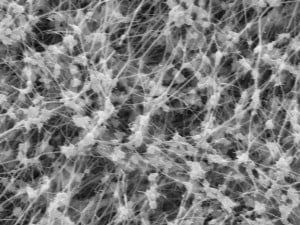PTFE Aspires to Clear the Skies

In the remote mountains of northern Chile, miles away from nearest city or streetlight, construction of the Large Synoptic Survey Telescope (LSST) has begun. Coupling an extremely wide field of view with a 3200 megapixel digital camera, the LSST will be able to capture the entire night sky every few days, generating a wealth of information that will be used to detect signatures of dark matter and dark energy, map the Solar System and the Milky Way and observe fleeting stellar phenomena like supernovae. In order to do this, the LSST relies on a complex system of lenses and reflecting mirrors to collect and focus incoming light; the largest of the mirrors is a mammoth 8.4 meters in diameter. To get the clearest view of the most obscure celestial objects, the telescope’s mirrors and lenses need to be free of terrestrial contaminants. When the researchers working on the LSST asked us to recommend a filter media to keep dust out of a pressurized lens assembly, we recommended that they test out one of our Aspire PTFE filters. Aspire membranes are created by expanding PTFE into a three-dimensional web-like structure with billions of microscopic pores. Air or gases can pass through the membrane while its microporous structure blocks out liquids and particulates as small as 0.1 micron, making them a good choice for applications where contaminant rejection is key. Sterlitech offers Aspire ePTFE membrane filters as cut discs and in packs of 200 mm x 250 mm sheets with pore sizes ranging from 0.1 microns to 5.0 microns. The membranes are supported by a layer of polypropylene or polyester to improve durability and are available in thicknesses ranging from 2 to 12 mil. The full range of Sterlitech’s Aspire Membranes, including hydrophilic and oleophobic versions, can be found on this page here. You can also visit this page to learn more about the Large Synoptic Survey Telescope and its mission.
- Most Viewed Blog Articles (5)
- Company News (285)
- Emerging Technologies (64)
- Microbiology and Life Science News (93)
- Water and Fluid Separation News (97)
- Filtration Resources (93)
- Product News (19)


![Join Sterlitech at BIO 2024 [Booth #5558]: Exploring the Future of Biotechnology](https://www.sterlitech.com/media/blog/cache/300x200/magefan_blog/b4.jpeg)



